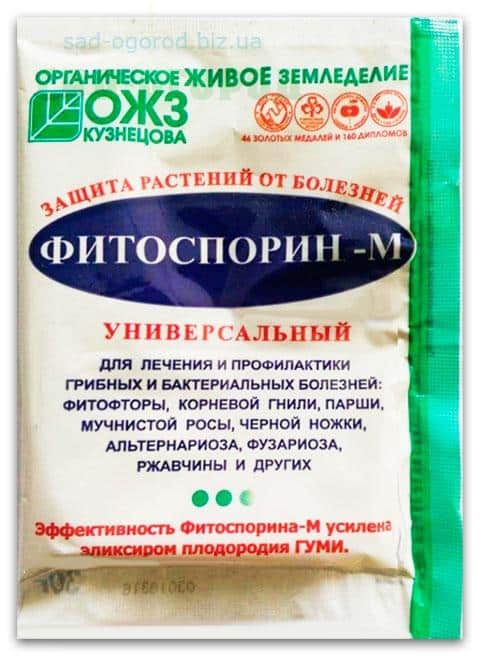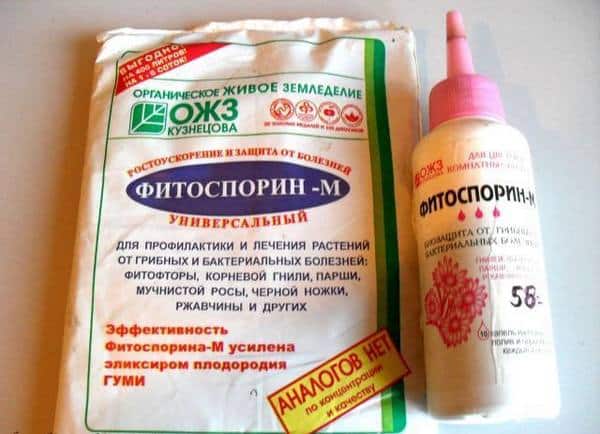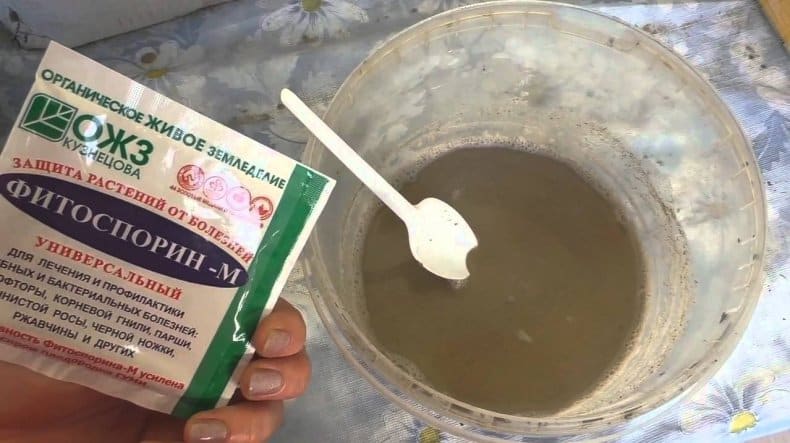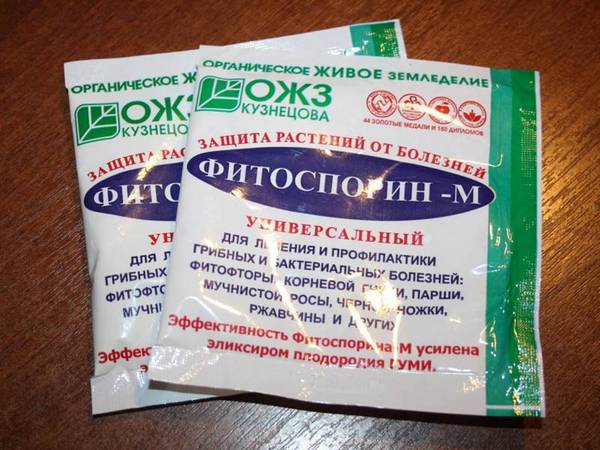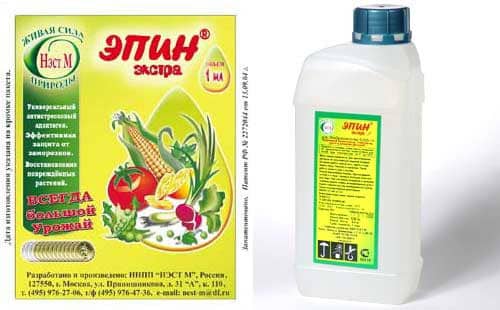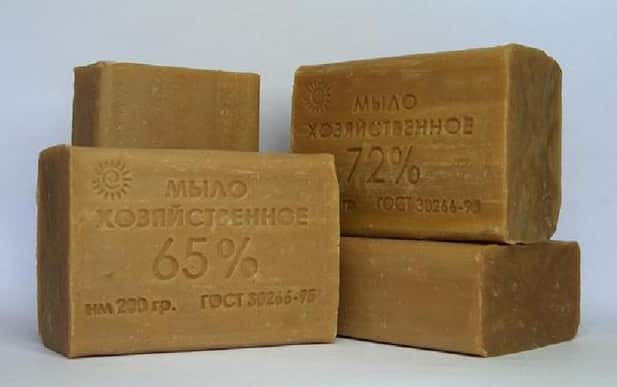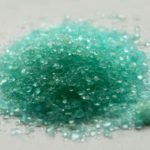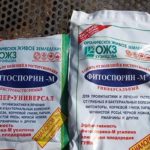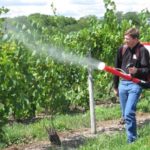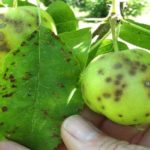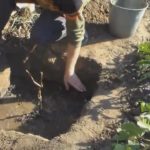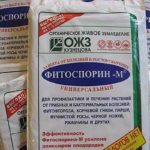The non-toxic drug "Fitosporin" with detailed instructions for use for grapes is a bacterial agent designed to combat fungi and bacteria - pathogens of grapevine diseases. This drug can be considered a first aid kit for vines of grape varieties with varying degrees of disease resistance. If the seedling is provided with timely assistance, the pathogen will have no chance of survival.
Properties and composition of the product
“Fitosporin” is a systemic drug, which is based on the principle of its action - the ability to spread inside the treated plant; it is transported by juice circulating through the vine. The basis is a spore culture that produces fungicidal oligopeptides, which are products of its vital activity. They create an unbearable environment for the proliferation of fungi and bacteria.
The natural fungicide is produced in paste, free-flowing, emulsion form. For grapevines, it is recommended to use a paste-like product, which can be applied in a diluted state directly to the area affected by fungi and bacteria. The active ingredient of Fitosporin is sulfur bacillus - a living soil bacterium.
“Fitosporin” is used against grape diseases caused by the proliferation of parasitic microorganisms in the vine.
Bacillus subtilis is a representative of the order of aerobic spore-formers. The bacterium was named Bacillus subtilis for its method of reproduction of the microorganism in the hay extract. This is the main element of Fitosporin.
Application
“Fitosporin” is used for many grape diseases, only some of them are indicated on the package with the product:
- root rot;
- scab;
- powdery mildew;
- rust.
This list can be safely supplemented with traditional grapevine diseases varieties growing in temperate climates. When choosing fungicides, gardeners often face the question of whether it is possible to treat the vine without spoiling the quality of the crop. When working with Fitosporin, nothing threatens the quality of the berries and human health. This product can be used to treat grapes at any stage of the growing season.
Pros and cons of using
The positive aspects of using a biologically active agent are that:
- you can use it without the risk of making the crop inedible not only before the ovary appears on the bushes, but during the ripening period of the berries;
- it is used in the fight against a wide range of grape diseases caused by fungal or bacterial infection;
- temperatures at which the drug works successfully range from –50 °C to +40 °C;
- multifunctionality - acceleration of growth, strengthening of the root system, antiseptic treatment;
- The environmentally friendly substance is not dangerous for animals, bees, or humans;
- combined with other drugs;
- improves the quality of the crop;
- relatively low cost.
The disadvantages of a biologically active product are that the active element decomposes in sunlight, and is inferior in the effectiveness of treating plants to chemical analogues.
Toxicity
The low level of toxicity of the product can be attributed to the positive aspects of the universal product, which has a beneficial effect on both garden and house plants. The low concentration of toxins is also indicated by the fact that after treating garden crops, bees continue to pollinate them without any risk.
Instructions for use
Depending on what “Fitosporin” you have at hand, the instructions instruct you to prepare a homogeneous concentrated mass:
- The paste is diluted in a ratio of 1 part Fitosporin to 2 parts water. Only after this can the spray liquid be diluted. One tablespoon of concentrated product is intended for 10 liters of water.
- It is a little more difficult to dose the powdered drug. For 10 liters of liquid, only 5 g of powder is required. Only pharmaceutical scales can ensure dosage accuracy. The aqueous composition is infused for 2 hours before use.
Attention! To maintain the performance characteristics of the drug "Fitosporin", it is strictly forbidden to use chlorinated water for the solution. Chlorine kills all types of bacteria, both harmful and beneficial.
How to treat grapes with Fitosporin for prevention? To prevent diseases, treatment is carried out three times:
- The first time is at the stage of leaves pecking from the buds.
- The second stage is during flowering.
- The third intensive treatment is carried out at the stage of petal flight. For her, the dosage of the product is doubled.
When treating bushes against scab, you should combine the drug with the growth stimulator “Zircon”. Its concentration is 1 g per 10 liters of water.
"Fitosporin-M" is a fungicide that enhances the vigor of seedlings, increasing the adaptability of seedlings to a new climate thanks to humic acids. A self-sufficient product that does not require additional enhancement of the effect, it is used for soaking plants with an open root system before planting.
Humic acids are not involved in antibacterial treatment against pathogens. The liquid form of “Fitosporin” is intended for treating vines, during the growing season, on leaves. The vineyard is watered with Fitosporin twice a month.
Compatibility with other substances
"Fitosporin" is compatible with chemical compounds, with the exception of those containing alkali or ingredients that can provoke an alkaline reaction. The list of compatible products includes the antibiotic drug “Fitolavin”, fungicides, growth stimulants, insecticides and many other products.
Mixtures with fungicides
List:
- "Vitivax 200";
- "Quadris";
- "Strobe";
- Tilt Premium;
- "Fundazol".
Compounds with insecticides
Liver compatible:
- "Aktara";
- "Decis";
- "Fitoverm".
Growth Promoter Supplements
"Fitosporin" is a drug from the "Organic Living Agriculture" series. It is enhanced with the GUMI fertility elixir, a growth vitamin used to strengthen the roots of seedlings. In addition to stimulating rapid development, sodium humates are enriched with a complex of microelements. The product has an anti-stress effect on plants after transplantation, at the stage of rooting, flowering, and ripening of the crop.
Composition of GUMI - a growth stimulant in Fitosporin-M:
- sodium humates - 60% of the active substance;
- phosphorus from 0.5 to 2.0%;
- sodium from 0.5 to 2.0%;
- potassium from 0 to 1.0%;
- minerals and trace elements of natural humus origin.
As part of Fitosporin, both actions of the humus elixir will help:
- accelerate the recovery of the vine after illness;
- strengthen the bush during flowering;
- resist drought without losing part of the harvest;
- not to be exposed to radiation;
- do not die from damage caused by insects and their larvae.
A complex of plant-friendly bacteria has an antifungal effect and destroys pathogenic bacteria that have settled in the plant. At later stages, the same remedy helps in the fight against progressive disease - a consequence of damage by pathogenic organisms.
Among the chemical growth regulators used in combination with Fitosporin are:
- "Amulet";
- "Plantafol";
- "Ribav-Extra";
- "Zircon";
- "Epin."
Folk remedies
In the fight against mildew, according to winegrowers, an infusion of sifted wood ash helps. Its proportion with water is 1/10. Leave for 5 days, strain, add 50 g of laundry soap. By treating the bushes with this composition from the second half of July, it is possible not only to defeat mildew, but also to accelerate the ripening of berries. They become sweeter.It is recommended to carry out ash treatment every 10 days. A remedy made from garlic, water and laundry soap will help combat downy and powdery mildew and anthracnose.
Cooking method:
- A glass of crushed garlic is filled with 1 liter of water.
- Infuse in a dark place for 24 hours.
- Pour into a bucket in which 6 liters of water are prepared.
- Add 50 g of soap and iodized salt.
- The solution is tinted pink with a few crystals of potassium permanganate.
This type of treatment is recommended to be carried out twice per season. An infusion of rotted straw can be used against fungus.
Analogues of the product
A drug with a similar effect to Fitosporin is Trichodermin. It also has a biological component. It is used to combat 60 plant diseases caused by fungi and their parasitic activity in relation to the cultivated plant. Release forms: powder and liquid. Trichodermin is also used for pre-planting treatment of soil, seeds, and the root system of shrubs.

